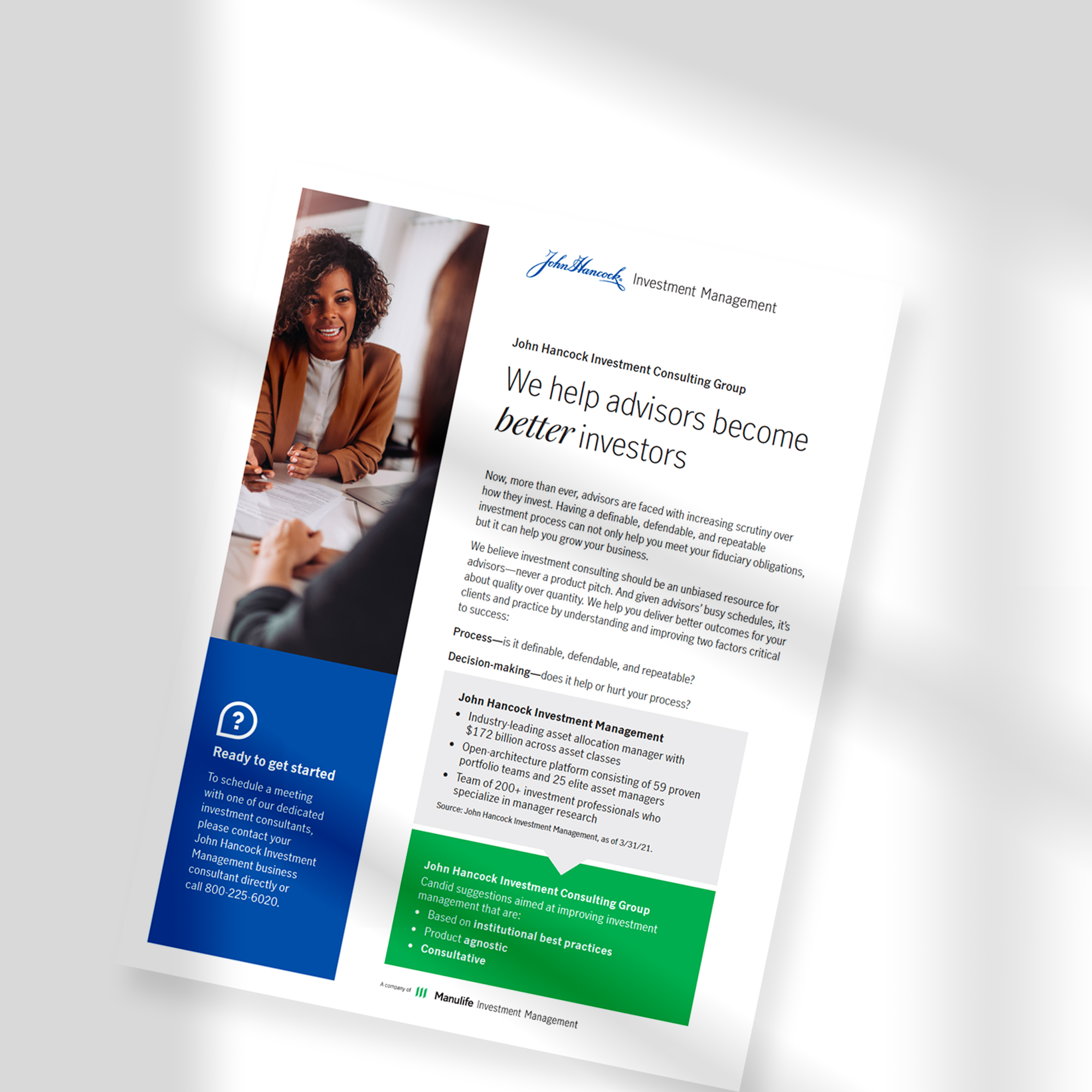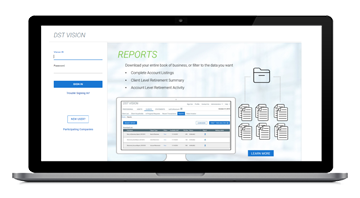

Investment consulting
Our Investment Consulting Group is dedicated to helping financial professionals enhance their investment management—through one-on-one consultations, educational programs, and our proprietary market dashboard.

We're an unbiased resource for financial professionals
Download the brochure
We offer valuable insight from the institutional space
We analyze the latest trends we're seeing from professional buyers to guide you in your portfolio construction.
Your investment approach deserves a closer look: is it definable, defendable, and repeatable?
When we engage with you, we’ll help you define your process and analyze your decision-making, which can produce better outcomes for your clients.

Process
Is it based on institutional best practices?

Decision-making
Does it help or hurt your process?

We can help you combine active, passive, and strategic beta in your clients’ portfolios
Discover our resourcesOur team evaluates portfolios using sophisticated tools, such as comparative model analysis.
Important disclosures
Important disclosures
Standard deviation is a statistical measure of the historic volatility of a portfolio. It measures the fluctuation of a fund's periodic returns from the mean or average. The larger the deviation, the larger the standard deviation and the higher the risk. The S&P 500 Index tracks the performance of 500 of the largest publicly traded companies in the United States. The MSCI All Country World Index (ACWI) tracks the performance of publicly traded large- and mid-cap stocks of companies in both developed and emerging markets. The Dow Jones Conservative Portfolio Index tracks asset allocation strategists who are willing to take 20% of the risk of the global securities market. The Dow Jones Moderately Conservative Portfolio Index tracks asset allocation strategists who are willing to take 40% of the risk of the global securities market. The Dow Jones Moderate Portfolio Index tracks asset allocation strategists who are willing to take 60% of the risk of the global securities market. The Dow Jones Moderately Aggressive Portfolio Index tracks asset allocation strategists who are willing to take 80% of the risk of the global securities market. The Dow Jones Aggressive Portfolio Index tracks asset allocation strategists who are willing to take 100% of the risk of the global securities market. The Bloomberg U.S. Aggregate Corporate Index is a broad-based benchmark that tracks the investment-grade, U.S. dollar-denominated, fixed-rate, taxable corporate bond market. It is not possible to invest directly in an index.
A three-step process in partnership
1 Initial assessment
First, your dedicated portfolio consultant will take inventory of your investment objectives and examine the risks and prospective returns of the equity, bond, and alternative assets in your model portfolio.
2 Portfolio analysis and stress testing
Next, we'll help develop your performance blueprint—a custom set of characteristics and expectations for your model portfolio’s behavior across a range of market environments.
3 Collaborative consultation
Finally, we’ll interpret the results together and review a range of potential options, exploring the practical implications of your model portfolio decisions, revisiting them over time as needed.
Our veteran team of consultant analysts will tailor the engagement to fit your needs

Decision Economics is designed to help you pursue better outcomes
Learn moreDECISION TRAP
Trial and error
Issue
Low conviction in the process leads to trial and error implementation.
BEST PRACTICE
Be grounded
Solution
Create an investment philosophy statement.
DECISION TRAP
Information overload
Issue
Information sources distract more than inform.
BEST PRACTICE
Be focused
Solution
Build a market dashboard to separate signals from noise.
DECISION TRAP
Pattern-seeking
Issue
Inattention to market cycles can lead to performance chasing.
BEST PRACTICE
Be disciplined
Solution
Apply base rates to identify attractive entry points.
DECISION TRAP
Lazy thinking
Issue
Individual and group biases lead to fast and lazy thinking.
BEST PRACTICE
Be skeptical
Solution
Employ counterintuition to address groupthink and lazy thinking.
DECISION TRAP
Recall
Issue
Poor recall leads to a focus on score carding.
BEST PRACTICE
Be thorough
Solution
Design a feedback loop to promote learning and process improvement.
Data you can use
Market Dashboard

Download our latest Market Dashboard
DownloadLearn more
Financial professionals: schedule a portfolio consultation or Decision Economics workshop.
Request a meeting with a Manulife John Hancock investment consultant
* indicates a required field
Thank you
Your submission was successful













